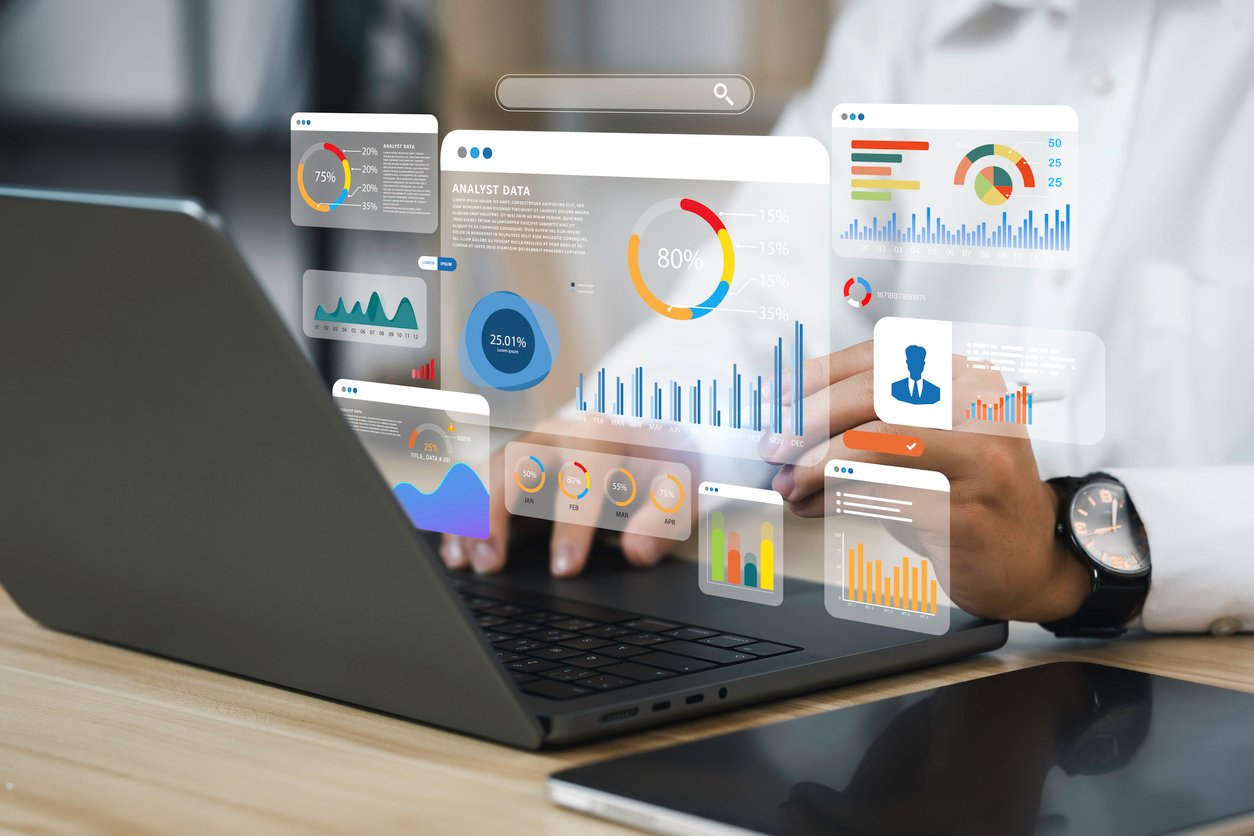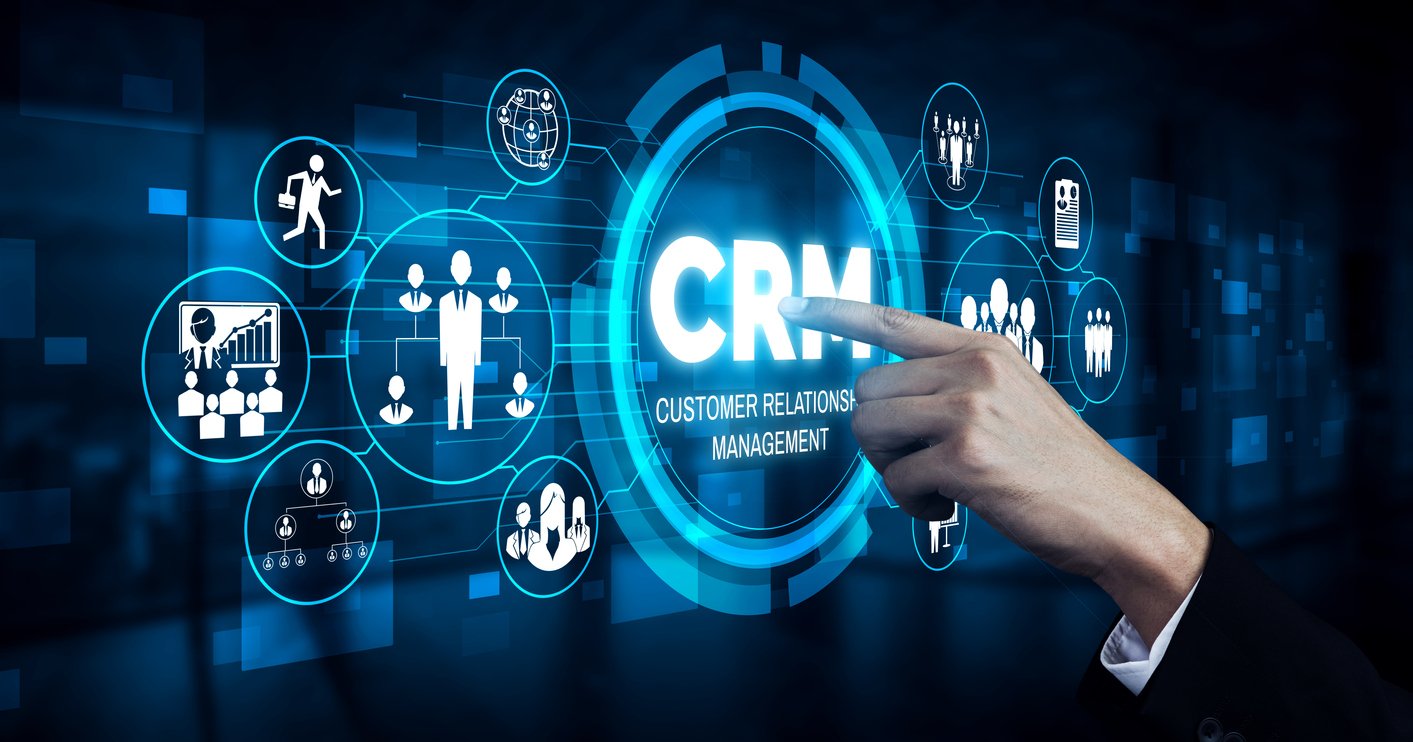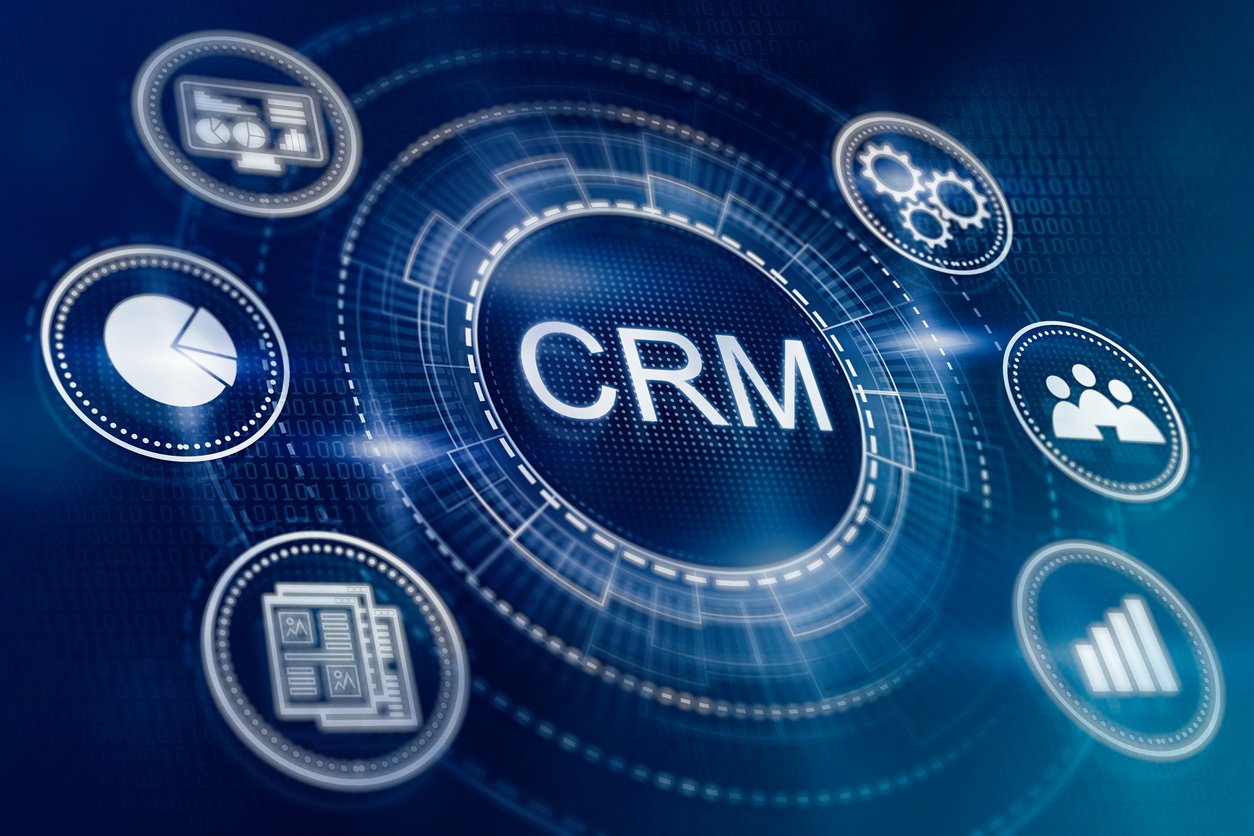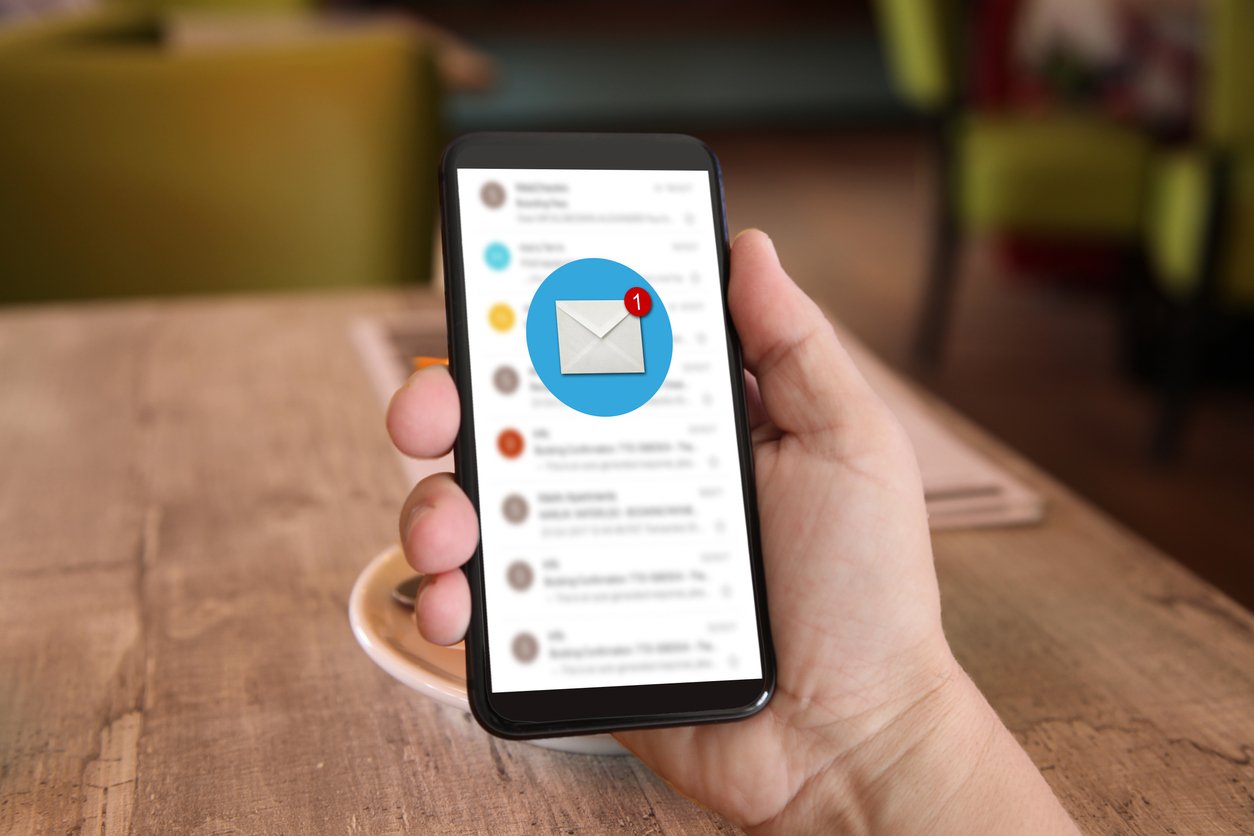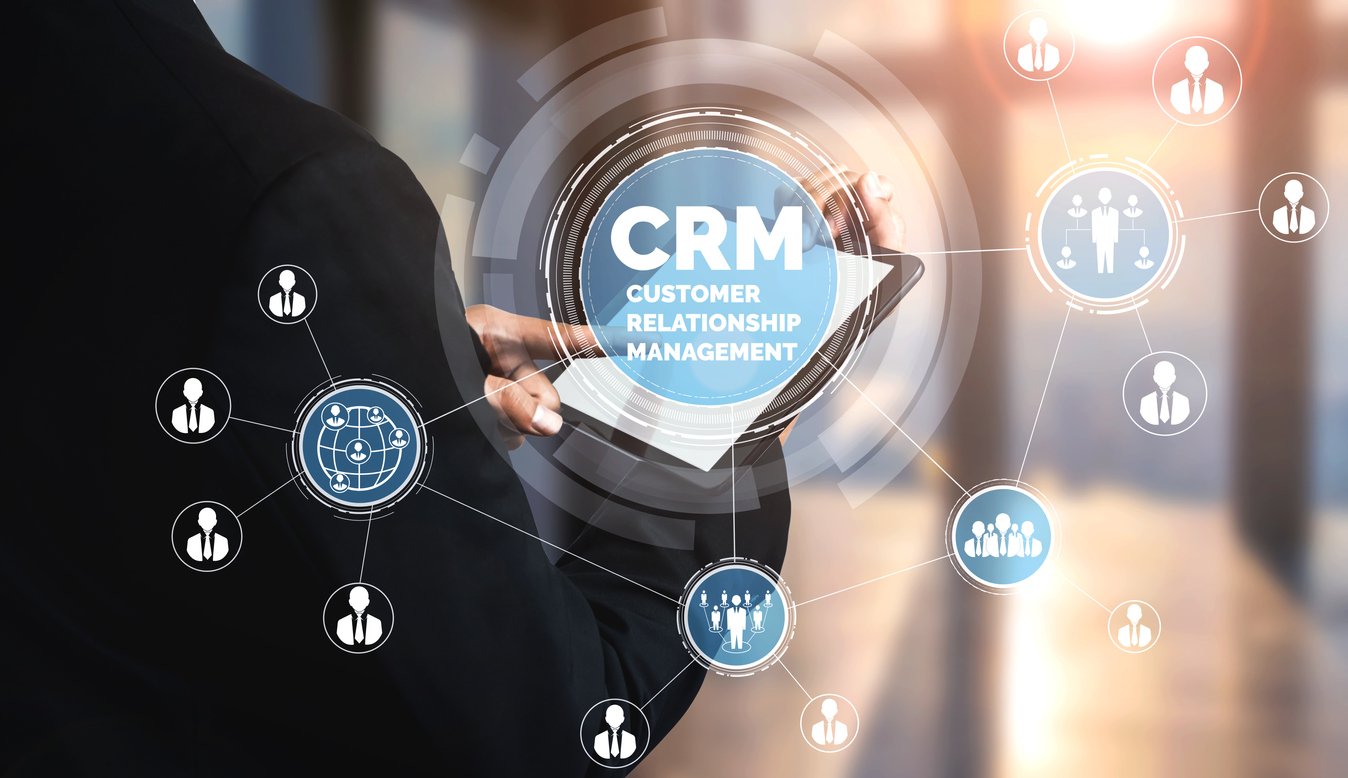
Why Using an Integrated CRM Unifies Your Tech Stack
 Updated on
Updated on
 By Bradley Kovacs
By Bradley Kovacs
Bradley Kovacs
Bradley has been passionate about technology since childhood, starting with Microsoft Flight Simulator at age six. In college, he automated his data e...
learn more
Bradley Kovacs
Bradley has been passionate about technology since childhood, starting with Microsoft Flight Simulator at age six. In college, he automated his data e...
Table of Contents
Table of Contents
Nobody likes Silos.
Aside from being bad for business, isolated information can also be very frustrating, especially when important business decisions need to be made.
Imagine that you’re an insurance salesperson at your company. You’re going through sales leads looking for upsell or cross-selling opportunities and land on a customer that recently purchased car insurance. You remember that your company offers a discount if the customer purchases car insurance and homeowner insurance, so you immediately click on the click to call button beside the customer’s phone number to contact them.
When the customer answers and you talk to them for a few minutes, you learn that another salesperson has been communicating with them via email and has already booked a phone appointment with them to discuss the particulars of homeowner insurance.
The customer is a bit annoyed that they’re being offered the same thing again by another salesperson, and you hang up feeling really awkward.
Because your company’s email and calendar systems aren’t integrated with your CRM, and the other salesperson didn’t manually leave any notes on the customer’s account, there was no way you could have known someone had already contacted them for this upsell opportunity.
When company systems aren’t connected, situations like this one can easily happen. It not only annoys the customer and makes the employee feel like a fool, but it can also earn your company a reputation for not being on the ball.
And nobody wants that.
This article explores the importance of an integrated CRM in your company’s overall tech stack.
What is an Integrated CRM?

An Integrated CRM is a customer relationship management system connected to your organization's other programs, applications, and systems. Ideally, you’d like your sales CRM to integrate with as many tech stack assets as possible to ensure that data is unified across them.
Ideally, the CRM that you use would provide excellent integration support. When we take a look at Ringy, for example, many features are already built into the CRM that makes it a perfect fit for insurance, call centers, and more. Out-of-the-box integrations with financial and lead generation software that your company likely already uses add to the functionality of the CRM by reducing the need to switch between applications. Plus, depending on the software, data can be automatically updated from Ringy to the software, from the software to Ringy, or both.
Why is it important for a CRM to Support Integrations?
By compiling data from 30,000 applications used by 190 companies, Productiv’s 2021 report found that larger organizations use many different applications, with most departments using between 40 to 60 different apps.
As you can imagine, keeping the data between those applications consistent is impossible without integrations.
Customer data is arguably the most important information for most organizations because it is used in so many different systems, from marketing and sales software to financial systems and technical support. The CRM is central to ensuring that customer data is accurate and organized, so when it can connect to the different assets in your organization’s tech stack, customer data comes from one central source.
Customer data is considered master data because it is essential for the organization’s operations. Having customer data siloed across different software can lead to a myriad of different issues, from incorrect contact information to multiple salespeople trying to make the same sale to the same customer multiple times. In other words, siloed customer data is not a good business practice.
This is why it’s essential for a CRM to support integrations with other software. Without this ability, your organization can unintentionally silo important customer information, leading to lost sales and soured customer relationships.
How to Integrate CRM with Other Software

If you’re concerned about the complexity of integrating CRM with the rest of your tech stack, don’t be!
Many CRM platforms have out-of-the-box integrations ready to go once you download or log into the software, as well as a variety of ways that you can facilitate connections between the CRM and different applications, programs, and systems in your tech stack.
1. Use Built-in CRM Integrations
Some CRM platforms come pre-coded to work with different software that their target customers use on a regular basis. The CRM vendor may also have formed partnerships with certain companies that offer complementary software that will benefit customers as well.
For example, Ringy easily connects with Google Calendar so appointments and meetings can be easily viewed, updated, and booked in the CRM.
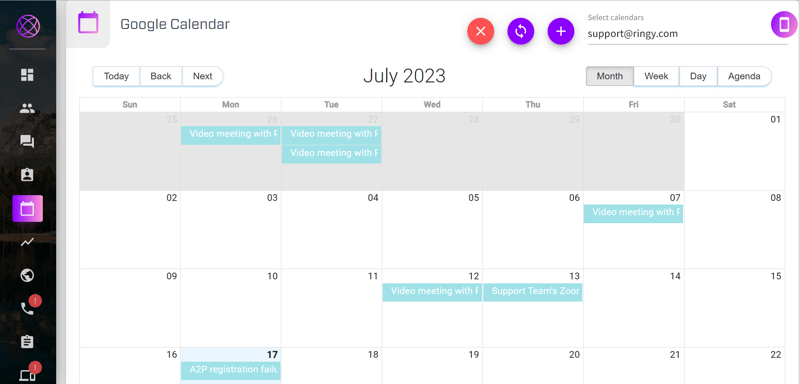
On the other hand, some CRMs have their own store where users can download the integration components necessary to connect a specific piece of software.
2. Use APIs
Application programming interfaces, or APIs, are essential bits of code that are used to connect different pieces of software. In general, an API facilitates specific communication between two systems, programs, or applications by outlining a set of definitions and protocols.
For example, a basic CRM integration with financial software may allow customer information to be automatically updated in the financial software every time it is updated in the CRM. This way, if an employee uses the financial software, they can rest assured that the customer information they’re looking at is always up-to-date and reliable. That could be where the API integration stops or provide additional functionality depending on the software it’s facilitating a connection to.
There are four different types of APIs, as outlined in the table below:
|
Type of API |
Use case |
|
Public API |
Open and available for use by any outside developer or business. A CRM may provide a public API so third-party developers can connect to their software. |
|
Partner API |
Only available to select businesses or outside developers to facilitate business-to-business connections. A CRM vendor with software-related business partners would provide this API to them. |
|
Internal API |
An internal or private API is intended to be used within the business only by the CRM’s developers or other employees. |
|
Composite API |
Combines two or more APIs to make a certain workflow or operation. |
Typically, CRM vendors are going to offer either public APIs or composite APIs directly to customers. Ringy offers an API integration that allows you to connect your business's different lead vendor tools. Connect with any lead vendor, and enable the vendor to send you leads that are then automatically imported into your Ringy CRM environment.
If you’re interested in learning more about connected phone systems, check out our article titled What is VoIP for more information.
3. Leverage Connector Integrations
Sometimes connector integrations are the way to go to get the functionality you need between your CRM and the software you need to connect with it. Connector integrations act as middlemen or third-party triggers that complete the connection between two pieces of software for you without you having to do a bunch of complex coding.
For example, Zapier can facilitate custom workflow automation, triggers, and actions between essentially any two pieces of software.
Consider this scenario:
- If your company uses Slack, Zapier can make it so that when a certain command is inputted in Slack, it automatically updates information in your Google Calendar.
- Let’s say you’re talking to a customer in Slack and want to book a video call with them. By entering a certain command, you can trigger Slack to book the video call for you via Google Calendar.
- If your CRM is integrated with Google Calendar, the appointment will also appear in your CRM.
This is just one example of how connector integrations can work, but the possibilities really are endless.
4. Write Specific Code to Connect Systems
Writing specific code to facilitate connections or integrations between different systems was once the only way that we could connect systems before connector integrations and APIs emerged as a solution.
While writing specific code to connect applications, programs, and systems can work, it’s not recommended because updates and changes to either software can easily break the code and the connection between the two pieces of software. In today’s world, where essentially every business uses cloud-based computing and updates can be pushed on a near-constant basis, constantly updating code would be a nightmare.
Why You Should Integrate CRM with ERP

Larger enterprise organizations often have an enterprise resource planning system, or ERP, in place to organize important business information and automate certain tasks and processes to make operations more efficient.
Aside from automating processes, one of the key aspects of an ERP is centralizing information for cross-departmental visibility. Increased visibility and access to important information are essential for productivity and to help eliminate knowledge-based power struggles. Ever worked with someone who wouldn’t share what they knew about a process or procedure because they thought it made them look smarter and more competent? By centralizing knowledge, an ERP helps prevent that from happening.
You might be getting a bit of déjà vu here because many functions of the ERP either overlap or align with the function of a CRM.
And it’s true—a CRM aims to centralize important customer information between departments, programs, systems, and applications so that it is accessible to everyone (with the right security and access privileges), making customer-related processes and tasks easier and more efficient.
Aligning the CRM and ERP is, therefore, a no-brainer, as the main purposes of these two systems align perfectly.
The table below summarizes the main differences between an ERP and CRM, so you can picture how effective they are when they are integrated together.
|
CRM |
ERP |
|
|
Here are the specific benefits that you can expect when you integrate CRM with ERP:
1. Creates a Single Source of Truth Between Both Systems
Having a single source of truth for master data is essential for consistency, accuracy, and enhanced productivity across all of your organization’s systems, applications, and programs. When all stakeholders and employees are working with accurate and clean data, confidence in giving quotes, engaging with leads, giving updates on shipping times or repairs, and much more in terms of customer interactions and business decision-making is increased.
Integrating an ERP with a CRM also allows master data from both systems to remain in a centralized, accessible location. This unifies your organization’s important data, ensuring that programs, applications, systems, and employees can access what they need when they need it without having to move between siloed pieces of software.
Plus, it’s much easier to manage security and access to data when its main source is centralized. While different business units and departments usually manage their data to a certain extent, most organizations also have a centralized approach to data security. Knowing that the sensitive customer data and financial data in your CRM and ERP are integrated makes managing the resulting single source of truth much easier and more effective.
2. Promotes Collaboration
One of the main driving factors of an integrated CRM is enhanced employee collaboration. When you connect the two main systems in your organization that act as sources of truth, collaboration is enhanced that much further. Functionally, employees with access to the same information can be on the same page with a wide range of matters, such as sales, marketing, and financial endeavors.
3. Leads to Improved Sales and Customer Service
Remember how we said a CRM is customer oriented while an ERP is finance oriented? When you combine knowledge about how your customer has interacted with your company and their purchases, you can identify more targeted, personalized recommendations for upselling and cross-selling.
Plus, the integration of general customer data with financials allows you to gain a better overall understanding of your customers through a complete, 360-degree view of each customer.
4. Improved Budgeting and Forecasting
With complete customer views that are achieved by connecting your CRM with your ERP, you can make better, more accurate budgets and forecasts that are matched to a holistic view of customer purchasing habits, behaviors, trends, and patterns.
For example, consider the following scenario:
- Let’s say that previous sales forecasting predicted that salespeople should be able to subscribe to at least ten new customers during the month of July for a specific SaaS product.
- However, this forecast only considered the financial data from subscriptions located in the ERP, which indicated increased revenue from the product during the month of July from the previous year.
- With the added context from the CRM, it turns out that the majority of this revenue is attributed to upgraded subscriptions from existing customers.
With this additional information, a more accurate sales forecast can be created that takes this into account.
5. Allows you to Create Automations So Information is Shared Effectively and Consistently Between Systems
There is always going to be some overlap with the information that an ERP and CRM contain, even though they have different focuses. The ERP, for example, will have some customer information because of purchasing and billing, while the CRM will likely have some form of financial information for each customer as well. Ensuring that the information between these two systems is consistent and accurate is extremely important for business continuity.
With automation, you can ensure that when one system is updated, the relevant information that exists in the other system will be updated as well. This is how the CRM and ERP become a single source of truth for the rest of the systems, applications, and programs that your company uses.
Considerations Before Integrating CRM with Other Software

While you might be convinced to start integrating your CRM with the other systems, programs, and applications that make up your company’s tech stack, it’s important to ensure that each asset is ready before integration.
1. Update Legacy Software Systems
Old and outdated tech stack assets can cause issues with how well different programs, applications, and systems connect, including data transfer efficiency. If it’s faster for an employee to go into a tech stack asset and copy/paste it to another because the integration isn’t providing information transfer fast enough, then it defeats the purpose of the integration in the first place. Plus, outdated systems can cause newer ones to become clunky and slow with certain tasks. Updating legacy software to the latest version is important to maintain business continuity.
2. Ensure Your CRM Data is Clean and Accurate
Poor quality data can cost organizations an average of $12.9 million annually. Ensuring your CRM data is clean and accurate before connecting it with other assets in your organization’s tech stack is therefore paramount so that you’re not distributing inaccurate data across all your systems, applications, and programs.
Auditing your CRM data on a regular basis is important not only to ensure the accuracy of the data it contains but also to analyze how well integrations with the CRM are working.
Here is a quick checklist that you can use to help inform your CRM data auditing process:
- Review documentation related to the CRM’s usage, configuration, and implementation, focusing on specific information about integration details that are relevant to your organization. This helps ensure that you’re on the right track with your current integrations.
- Assess the quality and consistency of your data, and make adjustments where necessary.
- Review the usage of the CRM within your organization. Ideally, the CRM should be used consistently by all of your customer-facing departments.
- Test integrations to ensure that everything works properly.
- Ensure regulatory compliance with data security and protection. If you use integrated security software with your CRM, this is the time to make sure that it’s protecting sensitive data as per regulatory standards.
3. Fill in Missing or Incomplete Data
Another important consideration you should consider before integrating your CRM with the rest of your tech stack is missing and incomplete data. While there also might be bits of customer information in other systems, applications, and programs, you want to ensure that your CRM is the main source of truth for customer data. This means that information such as physical addresses, phone numbers, email addresses, and more must be present and complete before CRM integration occurs. Programs like Dun and Bradstreet can assist with filling in missing data to ensure that all your CRM entries are complete and accurate.
4. Organize Data with Tags and Logical Naming Conventions
Think of your CRM data like a library. In a library, books are organized in a logical way, usually by genre, then author, fiction or nonfiction, then a short description that outlines what each book is about. This makes it easy to find the exact book you are looking for, even when the library houses thousands of different books.
Your data should be organized the same way. Data tags and naming conventions that follow a logical hierarchy are important to organize data so that it’s easily searchable. For example, you could organize customer data by industry, business segment, or relationship status (e.g., current subscriber, former subscriber, subscription tier). Data tags help give granular details to data for more context. For instance, you could give customers that fall within a yearly spend amount a specific tag.
Conclusion
The benefits of an integrated CRM cannot be overstated. Because the CRM is often the one system that houses the most important information for the company to conduct business, including customer data, integrating it properly with the rest of your tech stack to create a unified data solution is essential.
If you’re looking for an affordable, fully-featured CRM solution for your insurance, call center, law firm, recruiting agency, or any other type of business, look no further than Ringy. With one low affordable monthly rate, an easy-to-use interface, plus a flexible API to connect all your important programs, applications, and systems, Ringy could be the CRM you’re looking for.
Book a demo with Ringy today and discover how the CRM can drive sales for your business.

Skyrocket your sales with the CRM that does it all.
Calling? Check. SMS? Check. Automation and AI? Check. Effortlessly keep in touch with your customers and boost your revenue without limits.

Take your sales to new heights with Ringy.
Sales in a slump? Ringy gives you the tools and flexibility you need to capture leads, engage with them, and turn them into customers.
Subscribe to Our Blog
Enter your email to get the latest updates sent straight to your inbox!
Categories
Related Articles













